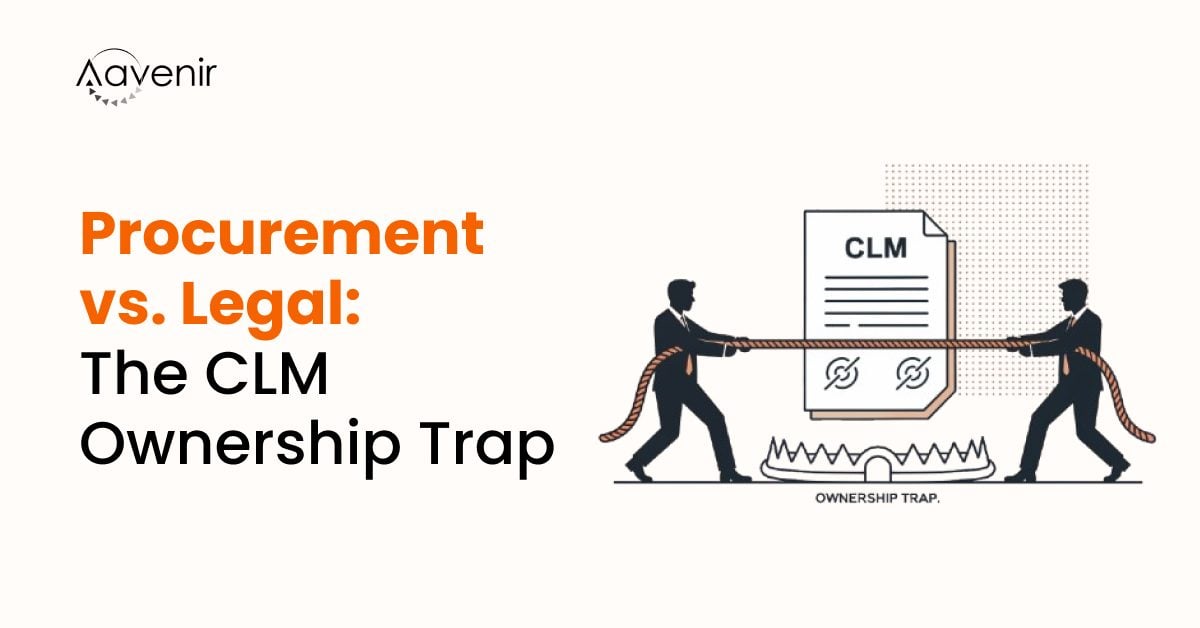The entire procurement function revolves around vendor collaboration. Starting from sourcing suppliers, inviting them for bidding, pre-onboarding evaluation, onboarding the right fit, negotiating deals to entering into a contract and then ongoing contract and supplier collaboration – is a Source-to-Contract cycle. At each stage, vendor management plays a crucial role. The quality of your vendor management program can either make or break your procurement.
47% of all vendor collaboration initiatives hit the wall because of the underpowered vendor management programs.
The one-size-fits-all approach does not work in vendor management simply because not all vendors share the same relationship with the organization. So, how should you build a roadmap to successful vendor management across your Source-to-Contract cycle?
A Strategic Execution from Source-to-Contract to Vendor Management
The Source-to-Contract cycle starts with building a supplier sourcing strategy and ends with signing a contract with the onboarded/selected vendor. However, modern approaches have gone way beyond this and consider ongoing vendor collaboration integral to overall vendor management across their lifecycle. A successful vendor management program offers the organization multiple benefits and strengthens the supply chain.
Benefits of a Successful Vendor Management Program
- Improved Efficiency: When organizations manage their vendors and businesses through effective and clear communication, vendors learn to understand their needs better and anticipate them.
- Business Practice Accommodation: Better understanding can help vendors and businesses identify where the supply chain can be streamlined.
- Operational Improvement: Businesses with mutually positive relationships often exchange information and ideas that can lead to improvements in the operational process.
- Cost Savings: Maintaining an ongoing vendor relationship is less costly than sourcing new vendors. In such cases, most vendors will also work to provide you with the best possible prices if they have a good and long-lasting relationship with your company.
Selection of Onboarding of Vendors
Step-1: Vendor Selection Process
A vendor selection process reads simple but complex and includes a series of procurement steps in practice. A normal vendor selection process encompasses three main stages – finding, vetting, and selecting vendors. It starts with analyzing requirements, vetting vendors, sourcing vendors, assessing and validating vendors, and finally, connecting with shortlisted vendors to finalize them and begin with vendor onboarding processes.
Tip: Procurement teams can implement vendor selection processes through sourcing management solutions in identifying requirements in an RFI, RFQ, or RFP and potential vendors to vet, evaluate, and choose the most qualified vendor on a multiple-criteria basis.
Related FREE Resources:
RFP Questionnaire Checklist
Supplier Sourcing Checklist
Step 2: Vendor Scoring, Assessment, and Evaluation
Once you have shortlisted vendors, the next crucial step is to conduct their initial assessment and evaluation. Practically speaking, vendor evaluation is an ongoing process that needs to be followed even after you have onboarded vendors and signed the contract.
Supplier Evaluation = Supplier Qualification + Supplier Sourcing + Supplier Performance Evaluation.
However, before you onboard the selected vendors, you must assess them against industry standards and your organizational benchmarks. Careful assessment of suppliers reduces the regulatory, contract, and security risk factors associated with working with systems outside your company.
Related FREE Resources:
Vendor Evaluation Worksheet
Third-party Vendor Due Diligence Checklist
Vendor Risk Assessment Checklist
Vendor Validation Checklist
Step 3: Vendor Onboarding
Onboarding your pre-qualified and vetted vendors is your vendor lifecycle management’s first step. Not only does it help you lay down your expectations from the association, but it also allows you to understand the vendors’ motivations and set a precedent of what is to come and what the vendor should expect from you.
As they say, well begun is half done. This stage requires utmost diligence. Know your vendors, verify and validate their information, set expectations, and onboard them.
Related FREE Resources:
Vendor Onboarding (and Termination) Checklist
Vendor Onboarding Qualification Questionnaire
Vendor Onboarding Solution Features Checklist
Step-4: Negotiation of Contract
So, you and your vendors are ready to partner for a long-term, mutually beneficial relationship. Now, the utmost critical stage comes with the authoring, negotiation, and signing of the contract. A good, sound contract is the basis for a healthy, strong working relationship for both parties. Procurement teams, with the help of legal, can build an initial set of contract templates that save time in the future for everyone within the business to use. Besides saving time and money, such legal-approved contract templates also improve governance and service and reduce supplier risk in the future.
Related FREE Resources:
Supplier Negotiation Checklist
Vendor Contract Review and Negotiation Checklist
Step-5: Ongoing Vendor Compliance
Assessing vendor compliance and potential risks is not a one-off task; it needs to be done on an ongoing basis. If your vendor is compliant, your business can meet compliance requirements.
FREE Resources:
Vendor Compliance Checklist
Contract Obligations Tracker
Supplier KPI Worksheet (Vendor Performance Management Scorecard)
ESG Compliance Worksheet
Implementing an Effective Vendor Contract Management System
Contract management isn’t an easy process – it requires a commitment, not only by the parties involved but by the entire organization, to ensure that agreements are entered into in a prescribed, controlled, centrally managed, and uniformly enforced manner. However, vendor contract management is a well-managed process for handling all agreements with the vendor from start to finish.
This includes all aspects of the contracts, such as
- Individual authorized for signature
- Central storage of these contracts
- Tools used to track these contracts
- Key provisions & KPIs that must be included in the contract
- Ways to protect customer information
Of all the areas of vendor management, the most difficult is handling contracts effectively with each of these vendors. Whether negotiating, tracking, or finding all of them, contracts can be a real challenge.
Companies can use RFPflow and Onboardingflow with the Contractflow suite to eliminate the Source-to-Contract gaps caused by stand-alone procurement and sourcing applications, such as lack of visibility, redundant data entries, and data inconsistencies.
Choosing the Right Source-to-Contract System
Source-to-Contract (S2C) technology facilitates upstream procurement by automating sourcing activities such as Contract Management, Spend Analysis, Supplier Relationship Management, and RFX Management.
Source-to-Contract tools provide procurement professionals with the tools they need to effectively support the purchasing process, thus lowering the overall procurement costs and eventually achieving higher operating profits. Most importantly, they help the procurement department streamline operations and obtain the best value through effective supplier adoption, evaluation, and communication.
And, Finally, Before We Leave…
For all these vendor relationships to build & prosper across your Source-to-Contract and Procure-to-Pay cycles, the bottom line is to select the best suitable vendor for the organization and successfully manage the vendor relationship via vendor contracts. Whether you are looking to establish a vendor management process from the ground up or looking for ways to streamline your existing vendor relationships, a vendor management tool can help you rapidly implement your vendor management strategy. In addition, if handled correctly with an optimal mixture of people, processes, and technology, the vendor management process can do wonders to plug in communication gaps and leverage the power of collaboration to drive more value out of vendor relationships.




